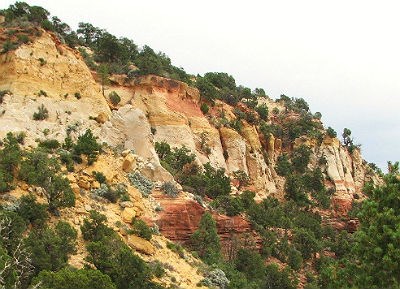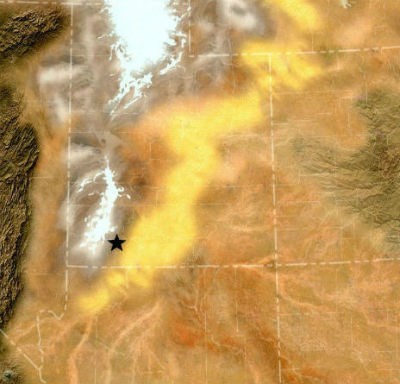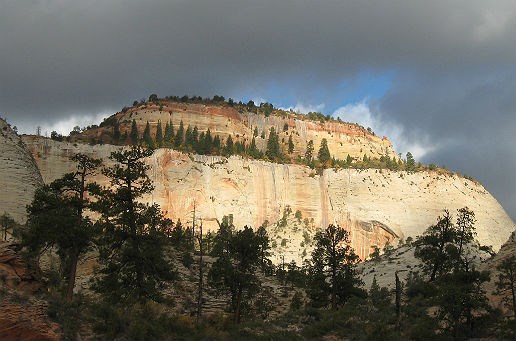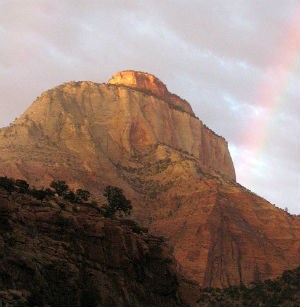
NPS photo ~175-170 million years ago
The Temple Cap Formation in Zion consists of sandstone and a layer of mudstone formed by coastal sand dunes and tidal flats during the incursion of a shallow inland sea.

Paleogeographic map courtesy of Ron Blakey, Colorado Plateau Geosystems, Inc. A shallow sea (specifically the Sundance Sea) encroached into the area, leaving in its wake a wide-range of rock types. These range from red mudstones deposited on a tidal flat, to sandstones deposited by small wind-blown, or aeolian, dunes left on sandy beaches, to limestones deposited when the area was briefly under sea level.

NPS photo/Adrienne Fitzgerald 
NPS photo/Adrienne Fitzgerald 
NPS photo/Adrienne Fitzgerald Return to the main Rock Layers page
|
Last updated: June 13, 2015
